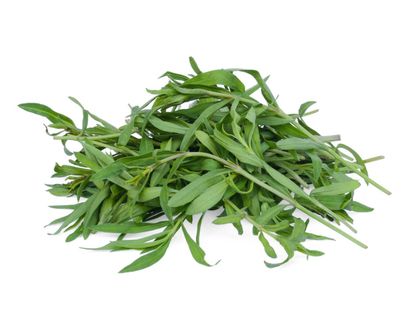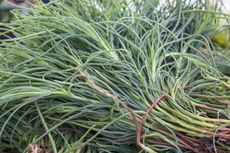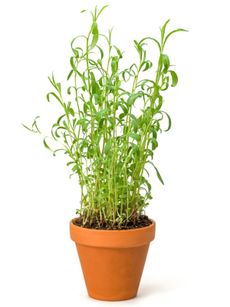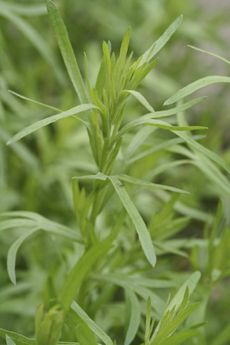French Tarragon Plant Care: Tips For Growing French Tarragon


The “chef's best friend,” or at the very least an essential herb in French cuisine, French tarragon plants (Artemisia dracunculus 'Sativa') are sinfully aromatic with a scent redolent of sweet anise and flavor akin to that of licorice. The plants grow to a height of 24 to 36 inches (61-91 cm.) and spread across 12 to 15 inches (31-38 cm.) apart. Although not classified as a different species, French tarragon herbs should not be confused with Russian tarragon, which has a less intense flavor. This tarragon herb is more likely to be encountered by the home gardener when propagated by seed, while French tarragon herbs are entirely propagated via vegetation. True French tarragon may also be found under the more obscure names of ‘Dragon Sagewort,' ‘Estragon,' or ‘German Tarragon.'
How to Grow French Tarragon
Growing French tarragon plants will flourish when planted in dry, well-aerated soils with a neutral pH of 6.5 to 7.5, although the herbs will do well in a slightly more acidic medium as well. Prior to planting French tarragon herbs, prepare the soil by mixing in 1 to 2 inches (2.5-5 cm.) of well-composted organics or ½ tablespoon (7 ml.) of an all-purpose fertilizer (16-16-8) per square foot (929 sq. cm.). Adding organic matter not only feeds the French tarragon plants but will also aid in aerating the soil and improve water drainage. Work the organic nutrients or fertilizer into the top 6 to 8 inches (15-20 cm.) of the soil. As mentioned, French tarragon is propagated vegetatively via stem cuttings or root division. The reason for this is that French tarragon herbs rarely flower and thus, have limited seed production. When propagating from root division, French tarragon plant care is required lest you damage the delicate roots. Use a knife instead of a hoe or shovel to gently separate roots and collect the new herb plant. Divide the herb in spring just as the new shoots are breaking ground. You should be able to collect three to five new transplants from the parent French tarragon plant. Propagation may also occur by taking cuttings from young stems early in the morning. Cut a 4 to 8 inch (10-20 cm.) amount of stem from just below a node and then remove the lower one-third of the leaves. Dip the cut end into rooting hormone and then plant in warm, moist potting soil. Keep the new baby herb consistently misted. Once the roots form on your new tarragon plant, it may be transplanted into the garden in the spring after the danger of frost has passed. Plant the new French tarragon plants 24 inches (61 cm.) apart. Either way you are propagating French tarragon, the plants prefer full sun exposure and warm but not hot temps. Temperatures over 90 degrees F. (32 C.) may require coverage or partial shading of the herb. French tarragon plants may be grown as either annuals or perennials, depending on your climate and are winter hardy to USDA zone 4. If you are growing French tarragon in a chillier clime, cover the plant with a light mulch during the winter months.
French Tarragon Plant Care
Growing French tarragon plants don't tolerate wet or overly saturated soil conditions, so watch out for overwatering or situating in locations known for standing water. Water about once a week and allow the soil to dry between watering. Mulch around the base of the plant to keep the moisture near the surface of your herb and to discourage root rot, otherwise French tarragon is fairly disease and pest resistant. There is very little need to fertilize French tarragon, and as with most herbs, French tarragon's flavor only intensifies in nutrient deficient soils. Just fertilize at the time of planting and then let it go. French tarragon may be pruned and pinched to maintain its shape. Divide the plants in the spring to retain the health of the herb and replant every two to three years. Once established, prepare to enjoy French tarragon fresh or dry in everything from fish recipes to egg dishes, and butter compounds or even to flavor vinegars. Bon Appétit!
Gardening tips, videos, info and more delivered right to your inbox!
Sign up for the Gardening Know How newsletter today and receive a free download of our most popular eBook "How to Grow Delicious Tomatoes."

Amy Grant has been gardening for 30 years and writing for 15. A professional chef and caterer, Amy's area of expertise is culinary gardening.
-
 Urban Composting Guide: How To Compost In The Middle Of The City
Urban Composting Guide: How To Compost In The Middle Of The CityUrban composting does not have to be daunting. You can compost in the city, and maybe even try some urban worm composting!
By Mary Ellen Ellis
-
 Shrub Diseases And Pests To Watch Out For
Shrub Diseases And Pests To Watch Out ForShrub diseases and pests can be challenging. Learn how to recognize and eradicate them before they can present a danger to your plants.
By Susan Albert
-
 Tarragon Plant Harvesting: Tips On Harvesting Tarragon Herbs
Tarragon Plant Harvesting: Tips On Harvesting Tarragon HerbsAs with most other herbs, tarragon is cultivated for its flavorful leaves rich in essential oils. How do you know when to harvest tarragon though? Click this article to find out about tarragon harvest times and how to harvest tarragon.
By Amy Grant
-
 Tips For Growing Tarragon Indoors
Tips For Growing Tarragon IndoorsGrowing tarragon indoors allows you easy access to the herb and give it protection from cold temperatures. There are a few tips to learning how to grow tarragon indoors. This article will help with that.
By Bonnie L. Grant
-
 Growing Tarragon In The Herb Garden
Growing Tarragon In The Herb GardenWhile it's not particularly attractive, tarragon is a hardy herb commonly grown for its aromatic leaves and peppery-like. Find tips for growing tarragon herb plants in the garden by reading the following article.
By Nikki Tilley